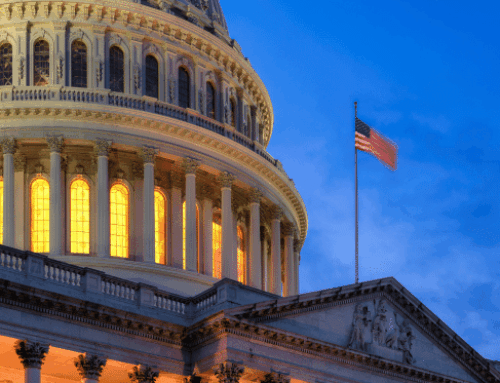Even amid a pandemic and daily demonstrations, some truisms drive Washington: Bad ideas never go away. Water flows uphill to money. And, apparently with the current administration, zombies are real and deserve taxpayer dollars. At least that’s the only explanation we can find for the administration’s attempt to raise from the dead an Army Corps of Engineers boondoggle that was buried (we thought for good) in 2008. Even at a time when lawmakers’ attention and federal dollars are needed elsewhere, the idea of reanimating the Yazoo Backwater Pumps project is back to haunt taxpayers.
Like many other potential federal public works projects, the Yazoo Backwater Pumps is a relic of times past. First authorized in the 1940s, the project is part of the Corps’ century-long effort to re-plumb the Mississippi River and its tributaries. Located where the Big Sunflower River meets the lower Mississippi, it’s a “backwater” because the land is at such a low level of elevation that when the Mississippi is high, or a lot of water is coming down the Sunflower, the water backs up into the area. The nearly 1 million acre area was historically filled with wetlands, and bottomland forests. But the frequent flooding made the land fertile, so now two-thirds of it has been cleared for farmland. And large agribusiness has been battling the waters, and seeking federal subsidies, ever since.
While project boosters tout flood protection for communities and homeowners, the fact is the overwhelming beneficiary would be a handful of large farmland landowners. And Uncle Sam would pick up the entire check costing hundreds of millions of dollars. The project consists of building levees and flood gates to prevent Mississippi waters from backing into the flood plain. But this also cuts off waters from leaving the backwater. So, expressing a truism for the Corps – We Do Nature Better™ – the plan is to build one of the world’s largest pump assemblies to pump the water out. But it won’t just be floodwaters. Current estimates are that nearly 200,000 acres of wetlands will also be drained or damaged.
The project was such a boondoggle it joined an “elite” club of projects receiving an EPA 404 veto from the Bush Administration in 2008. This rarely used authority to 86 a project comes from the Clean Water Act and is used when the negative effects are so damaging to the environment that it just can’t be done. Counting Yazoo, there have been only 13 EPA project vetoes, ever.
Yet, the Trump Administration wants to raise this from the dead.
Intent on making boondoggles great again, the administration is undertaking a “supplemental” environmental impact statement. This is a farce. The Corps concedes that 80 percent of the benefits will still derive to agriculture. Originally estimated to cost $220 million, the price tag is now at least $300 million. Throw in the ecosystem restoration the Corps must do to mitigate the wetlands damage and it balloons to nearly $440 million. Simply operating the pumps is estimated at $2 million annually. And without a lot of actual flood protection. According to the Corps own work, even if the pumps had been in place and fully functioning, the flooding in 2019 would have still inundated nearly 350,000 of the 500,000 acres – or more than a third of the backwater – flooded that year. But the Corps is not even going to consider cheaper alternatives such as voluntary buyouts, elevation of homes, or flooding easements because project boosters don’t want them to. Which is understandable. Unlike other Corps flood control projects where local beneficiaries have to split the construction bill, Mississippi’s Congressional delegation has ensured federal taxpayers will cover 100 percent of the cost. If you aren’t footing even a small portion of the bill, why would you care about keeping costs down?
While the Yazoo Backwater Pump is egregious, it’s not out of step for the Corps and policymakers. Corps projects are often studied in isolation. Assessment of a levee project rarely addresses whether it will increase floodwaters downstream (it will). Coastal port deepenings pretend all future traffic is new and ignore economic losses from traffic shifting away from nearby ports. And inland waterway barge operators claim they shouldn’t have to pay for dams because they don’t use dams, only locks next to them. That’s like having a fence built but saying you’ll only pay for the gate because that’s all you use.
Federal policymakers need to find ways to make better investments in public works projects that create greater returns. Just as no single raindrop is responsible for a flood, no one project or policy is responsible for the nearly $26 trillion national debt. To tackle deficits while efficiently providing the flood control and economic development this nation needs, you should start by securing the wins you already have. Instead of giving new life to the Yazoo Backwater Pump, we need to drive a stake through its cold subsidy seeking heart.










